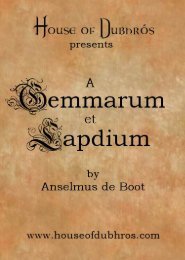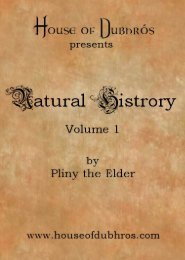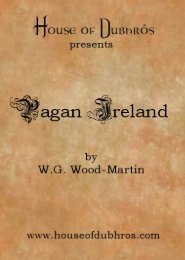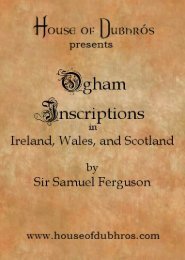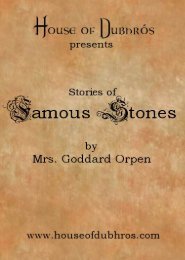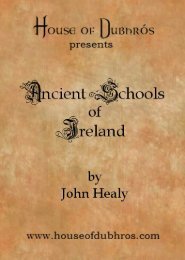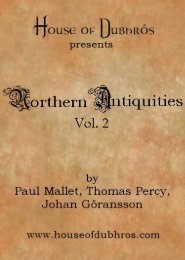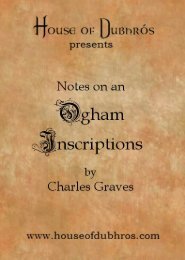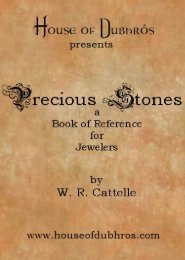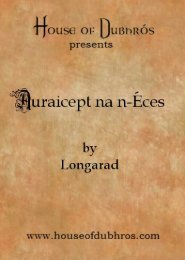You also want an ePaper? Increase the reach of your titles
YUMPU automatically turns print PDFs into web optimized ePapers that Google loves.
4 Introduction to<br />
score (principally in the North <strong>of</strong> England) bearing in<br />
scriptions in the English Runic character. The most notable<br />
<strong>of</strong> these are the elaborately carved crosses at Ruthwell<br />
(Dumfries) with verses abridged from the Dream <strong>of</strong> the<br />
Gross and Bewcastle (Cumberland), the grave slab with<br />
inscriptions both in Roman uncials and Runic characters<br />
from Falstone (Northumberland), and the three stones from<br />
Thornhill (Yorks.). Of. Thornhill III. Gilsuifr ararde eefter<br />
Berhtsuifre becun on bergi. Oebiddafr frier saule. (Gilswith<br />
erected to the memory <strong>of</strong> Berhtswith a monument on the<br />
tomb. Pray for her soul.) The earliest date probably<br />
from the seventh century; while the latest contain forms<br />
which point to about the middle <strong>of</strong> the ninth. There<br />
seems no reason, however, for supposing that for this<br />
purpose the English Runic alphabet remained longer in<br />
use than for coins. At all events there is no evidence<br />
that it survived the great Danish invasion <strong>of</strong> 866, which<br />
swept away the upper classes in the greater part <strong>of</strong><br />
Northern England. After this time we find only MS. Runic<br />
alphabets, doubtless preserved as antiquarian curiosities,<br />
except for the letters wyn and from, which had been<br />
adopted into the Anglo-Saxon book-hand, and e&el, dseg<br />
and man, which were occasionally used as shorthand in<br />
the MSS.<br />
From the sixth century, however, the alphabet had<br />
developed on totally<br />
different lines in Scandinavia and<br />
England. To the original 24 letters the English eventually<br />
added six, tesc, ac, yr, ear, calc, gar, if not a seventh ior.<br />
The Scandinavian alphabet, on the other hand, continually<br />
reduced the number <strong>of</strong> letters, until by the ninth century<br />
no more than sixteen were left. How incapable they were<br />
<strong>of</strong> representing the sounds <strong>of</strong> the language can be seen from<br />
the greater Jsellinge stone set up by Harold Bluetooth, king<br />
~~""<br />
<strong>of</strong> Denmark (c. 940-986):<br />
Haraltr kunukR baf> kaurua kubl pansi aft Kurm fapur sin auk<br />
aft paurui rmij>ur sina, sa Haraltr ias sar uan Tanmaurk ala auk<br />
Nuruiak auk Tani karpa kristnq.<br />
(King Harold ordered this monument to be made to the



